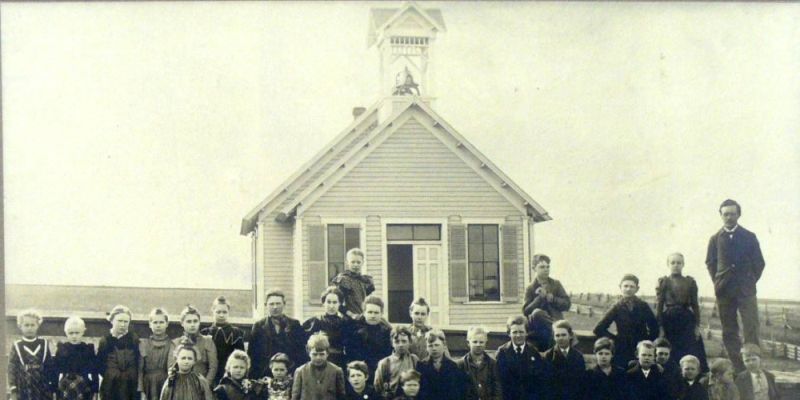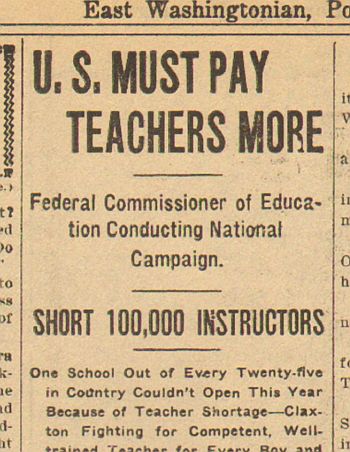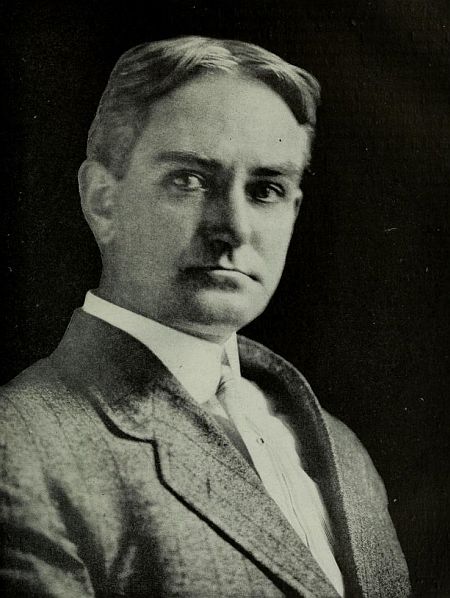Pomeroy Washington Downtown National Historic District

News from the

April, 1921
Page 1
U. S. MUST PAY TEACHERS MORE
Federal Commissioner of Education Conducting National Campaign
SHORT 100,000 INSTRUCTORS
One School Out of Every Twenty-five in Country
Couldn't Open This Year Because of Teacher
Shortage—Claxton Fighting
for
Competent, Well-trained Teacher for Every Boy and Girl
in America—Favors Minimum Wage of $2,000 a Year.
"America's greatest problem—the shortage of school teachers"
To meet this problem Philander P. Claxton, commissioner of education, is carrying forward a national educational campaign.

In every way Claxton is trying to get before the people this big idea:
You are paying $50,000,000,000 as your bill for this war. You can have a 100 per cent elementary school system at an outlay of $2,250,000,000 a year. Education is the greatest preventive of war. It is the only insurance of progress and prosperity. Will you foot the bill? Will you demand that national, state and local officials give you the chance—for your children's sake?"
The schools are short 100,000 teachers.
One school out of every 25 in the country couldn't open this your because of a teacher shortage.
Claxton is fighting for a "competent, well-trained teacher for every boy and girl in America!"
"Recent reports from county and district superintendents," says Claxton, "indicate that in addition to thousands of schools without any instructors, many are taught by untrained teachers.
"The shortage will continue to be serious until better salaries are paid and better training facilities are provided.
Can't Be Paid In Money.
"Teachers worthy of a place in the schools in which American children arc prepared for life, can never he fully paid in money. They do have certain spiritual rewards, but this should not be an excuse for putting education on a charity basis.

Philander Claxton
"We have now come to the parting of the ways. Which shall we accept? Makeshift teachers, who are simply teaching until they can find a chance in some other field, or the men and women with ability and culture who can be trusted with the world's most precious treasures--the minds of our children?
"We cannot hope to attract well-equipped teachers unless there is a guaranty of good wages for years to come."
"What do you consider an adequate salary for the average teacher?" he was asked.
"It ought not to be less than $2,000 for elementary and secondary schools," was his reply. "This is three times as much as the average for the year 1917-18, and more thun l50 per cent. above the average for the year 1919-20.
"Can we pay such salaries? With proper economy—yes.
"Consolidation of small rural schools will cut down expense. With that done and a work-study-play rotation plan adopted in the city schools, 750.000 elementary teachers will be enough for the next five or ten years.
"At an average wage of $2,000 It will take $1,500,000,000 to pay that number of teachers. Increase this by 50 per cent—a liberal amount—to pay for administration, supervision, bulldings, equipment and supplies, we have a total $2,500,000,000.
"Our part in the World war, in which we fought for freedom and democracy, cost us not less than $50,000,000,000. Without education, there can be neither freedom nor democracy."
Claxton pointed to a questionnaire put out by the National Educatlon association at the beginning of the present school year to get facts as to the teacher shortage.
Shortage Greatest in South.
Answers showed Georgia leads with the greatest estimated teacher shortage and below-standard teachers with 5,960. North Carolina is next with 5,294.
Only one slate, Nevada, a sparsely settled commonwealth, reported no actual shortage, though it recorded thirty below-standard teachers.
Replies to the question, "What per cent of your teachers have had two years or more training beyond high schools?" show that in only a few states have one-half the teachers had that amount of training.
"About one-sixth of the teaching forces in the American public schools leave each year," continued Claxton. "Many of the women leave to be married or to enter other lines of endeavor. In former years, however, their places were always supplied from the new recruits.
"Now the desirable recruits go elsewhere, and will continue to do so until they receive something more than a mere living allowance In return for a lifetime of consecrated service."
[The school at the top of the page has been identified as the Pataha Flat school. I don't know the year of the photo.]
## 30 ##